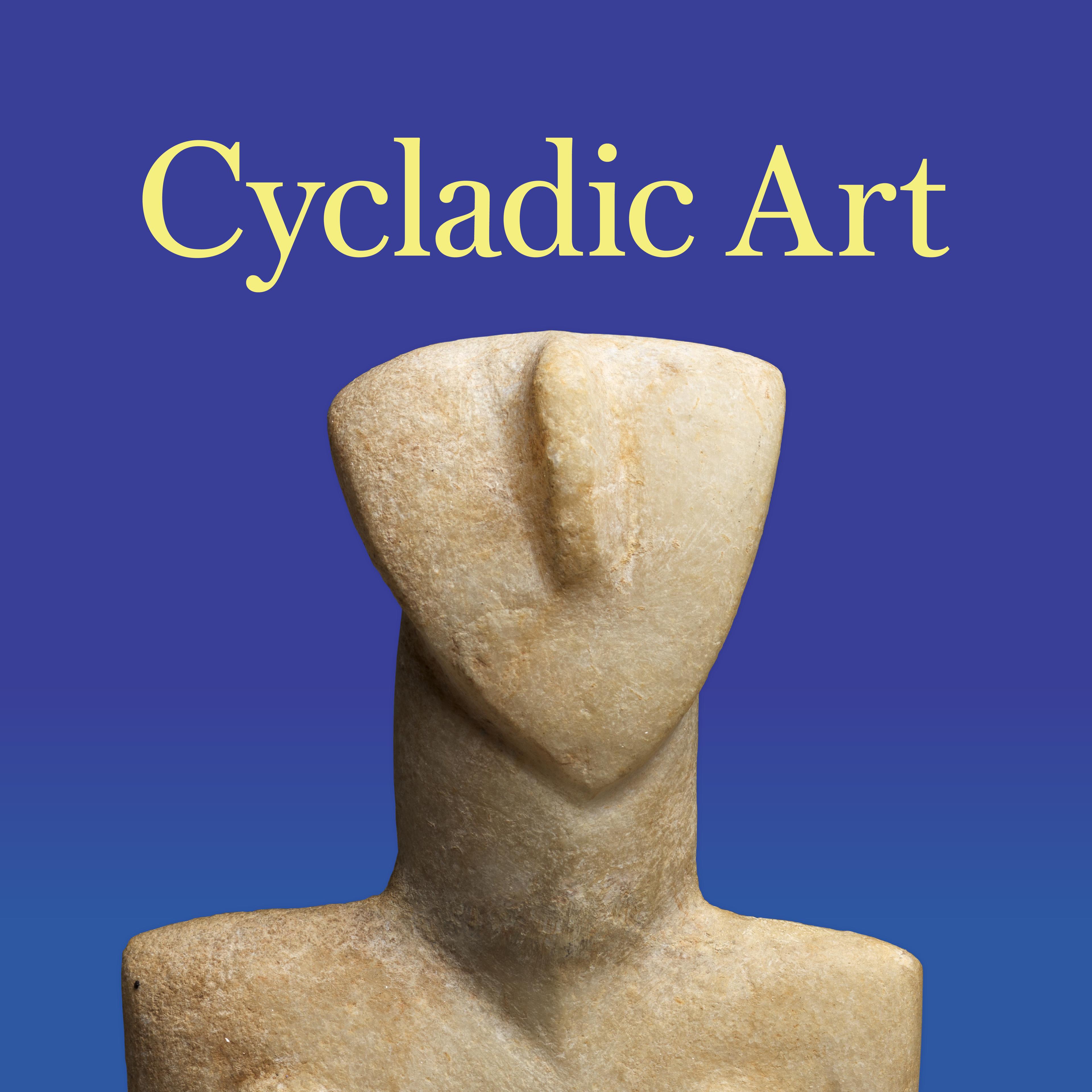Audio Guide
What’s it like to excavate ancient artifacts from the ground? What can these mysterious figures tell us about Greek life 5,000 years ago? Listen as archaeologists discuss the objects on display in their cultural context, including fertility rites, the practice of oracles, and navigating at sea – including some surprising details that are hiding in plain sight. Narrated by Nina Diamond.

Intro
Narrator: Welcome to the Leonard N. Stern Collection of Cycladic Art, which The Met has here on loan from the Hellenic Republic.
I’m Nina Diamond, an Executive Producer in the Digital Department. For this Audio Guide, we recorded conversations with experts - about this fascinating and enigmatic culture.
For instance, they were a seafaring people, but so far we have no surviving remains of boats. We know they were a complex and creative society, but they left no writing. They created thousands of marble figures, but today, we’re still not entirely sure of their purpose.
Some of the people who can tell us the most are the archaeologists, those who have actually been able to excavate the sites where the Cycladic people lived…and died. In this guide,you’ll learn about 10 objects from: Sandy MacGillivray, former curator of Knossos on Crete:
MacGillivray: Basically, I've been digging all my life, pulling stuff out of the ground and helping to piece the past together to tell stories that are relevant to the modern world.
Narrator: …and Giorgos Gavalas, Research Scholar here at The Met and archaeologist in the Ephorate for Antiquities of the Cyclades, Hellenic Ministry of Culture:
Gavalas: I hope that through all this experience and collaboration with the Metropolitan Museum of Art, that we are developing a step forward on the understanding of Cycladic marble objects.
Narrator: Together, we’ll try to puzzle out the purpose and meaning behind some of the objects in this gallery and hear about the work of those in the field and at The Met to discover what lies beneath the surface.
This Audio Guide is sponsored by Bloomberg Philanthropies.
- Intro
- 1330.0 - Marble female figure (ca. 2700–2400/2300 BCE)
- 1331.0 - Marble female figure (ca. 3200–2700 BCE)
- 1332.0 - Marble vase with high foot and lug handles (ca. 3200–2700 BCE)
- 1333.0 - Marble female figure & Marble palette (ca. 3200–2700 BCE)
- 1334.0 - Marble female figure (ca. 2500–2400/2300 BCE)
- 1335.0 - Marble torso of a figure, Marble torso of a figure & Marble torso of a figure (ca. 2700–2500 BCE)
- 1336.0 - Marble Bowl (ca. 2700–2400/2300 BCE)
- 1337.0 - Marble female figure (ca. 2500–2400/2300 BCE)
- 1338.0 - Terracotta frying pan (ca. 2700–2400/2300 BCE)
- 1339.0 - Silver Bracelets & Copper alloy chisel (ca. 2700–2400/2300 BCE)
Playlist
Joseph Alexander MacGillivray
Joseph Alexander (Sandy) MacGillivray specializes in Aegean Bronze Age archaeology with a particular focus on Minoan Crete and the Cyclades. He read Classics and Archaeology at McGill University in his native Montréal, Canada, and received his doctorate from Edinburgh University. He was Knossos Curator and Assistant Director of the British School at Athens, under whose auspices he excavated at Sparta, Knossos, and the Minoan city at Palaikastro in eastern Crete before becoming Associate Professor of Art History and Archaeology at Columbia University. The author of numerous works on Aegean archaeology, he has appeared as expert lecturer in several documentaries and films, and has led many archaeological tours in Greece.
MacGillivray, J. A. (2001). Minotaur: Sir Arthur Evans and the Archaeology of the Minoan myth. Pimlico.
Georgios Gavalas
Georgios Gavalas is a distinguished archaeologist and curator who works on the islands of Siphnos and Seriphos in the Ephorate for Antiquities of the Cyclades, Hellenic Ministry of Culture. He received his B.A. and Ph.D. from the University of Ioannina, Epirus, Greece, and is a Fellow of the Archaeological Society of Athens as well as a member of the British School at Athens. He has served as the Secretary of the Society for Cycladic Studies since 2015.
Aurelia Sound Works
Produced by The Metropolitan Museum of Art in collaboration with Aurelia Sound Works.
